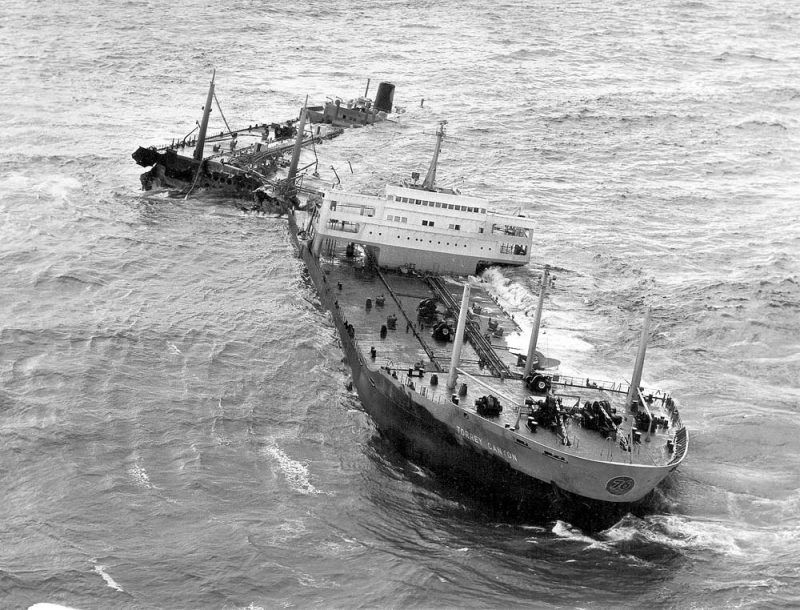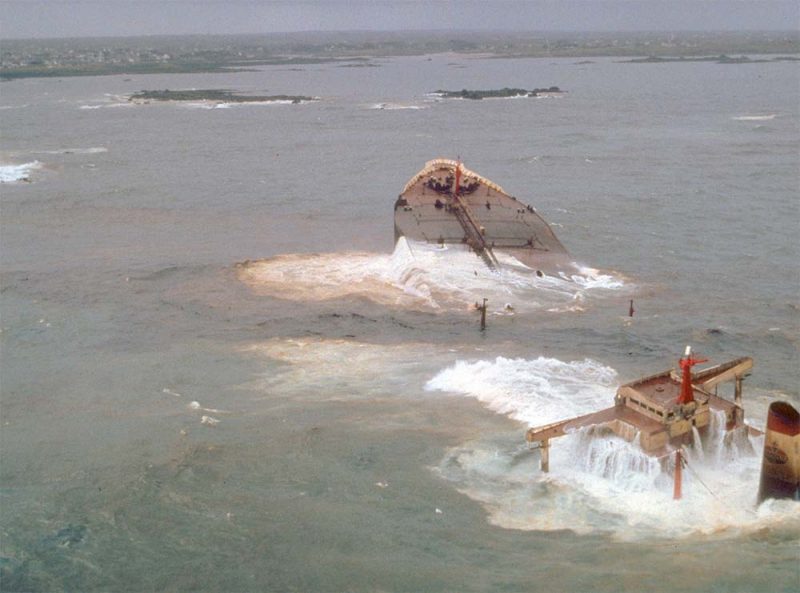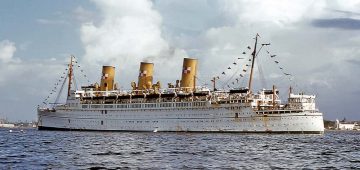Owned and Chartered Oil and Gas Tankers
The rise of the many independent Norwegian tanker owners such as Bergesen as well as Aristotle Onassis and Stavros Niarchos and similar Greek entrepreneurs in the 1950s and 1960s gave a rapid increase in the amount of available chartered tonnage for the oil majors. This was normal commercial practice but was increased or decreased to cover many emergencies such as the Suez Crisis of 1956 and the closure of the Suez Canal between 1967 and 1975, and the price hike by OPEC countries in October, 1973. The percentage of chartered in tonnage by the oil majors tanker fleets rose from 39% of the world tanker fleet in 1938 to 58% in 1960 and 60% in 1970 and 64% in 1980 to reach 73% in 1990 (Source: BP Statistical Review of World Energy). This trend of minimal tanker ownership has continued with the current Exxon fleet of the United States of America having an almost fully chartered tanker fleet for 99% of their requirements with only five owned or leased tankers. This latter figure is due to the devastating oil spill of Exxon Valdez in Alaskan waters in 1989, and the strict OPA90 pollution laws that became a requirement in 1990 in the United States where it is much safer for the reputation and economics of an oil major such as Exxon to charter.
In the 1950s, there were seven oil majors known as the ‘Seven Sisters’ with Standard Oil of New Jersey (known as Exxon in the United States of America but Esso to the rest of the world), Standard Oil of New York or Mobil, Standard Oil of California known as Socal which later became Chevron, Gulf Oil, Texaco, BP and Shell. Today, due to mergers and takeovers, there are only four oil majors left in the European oil majors of BP and Shell, and Exxon and Chevron in the United States. The latter two companies are the biggest and second biggest suppliers of oil and energy in the United States of America. The third biggest supplier is an amalgamation of five American Oil Internationals in Conoco (Continental Oil), Phillips and Arco, the latter being a merger of the Atlantic Oil, Richfield Oil and Sinclair Oil companies. This has propelled these five smaller oil companies by market forces to merge into the status of an oil major.

When a requirement for an oil shipment or series of shipments is established it is usually offered by the oil major on the open market via a tanker broker to several leading independent tanker companies simultaneously by E-mail. The tanker broker acts as an intermediary answering all questions from both the charterer and the participating independent tanker owners regarding details of the shipment(s) i.e. port charges, loading and discharging details in particular relating to laytime, the number of days allowed for cargo transfers, and demurrage etc. When the participating independent owners have replies with their freight rate estimates, the broker acts as an agent between the charterer and the successful tanker owner until the fixture is concluded. The formal documentation regarding all details of voyage and cargo is known as a Charter Party, drawn up by the broker, and agreed to on a preliminary basis by both parties.


Oil cargoes are not traded on the Baltic Exchange in London and other major bourses, but are handled by six private brokering firms in London for most international oil cargoes and a similar number in New York for American oil cargoes. However, the principle of ‘Our Word, Our Bond’ remains the same, with the full Charter Party often signed during or after the completion of the voyage (s). The Charter Party can take three forms :-
A Voyage Charter is an agreement for the carriage of oil from one port to another, the tanker owner receiving freight money at a fixed sum per day for the cargo carried. It includes all of the details and terms under which the oil is carried, the ports and the dates between which loading is to commence and lay-time maximums, demurrage etc. The shipowner pays for the port charges, fuel costs, wages of the crew and the maintenance of the ship.
Under a Time Charter, the shipowner hires out his tanker for a period of time at a fixed sum per month based on the deadweight (dwt) carrying capacity of the vessel. The charterer decides the ports to which the tanker takes the oil cargoes. The shipowner contracts to provide a seaworthy vessel capable of maintaining a stated speed on a given consumption of fuel. The charterer pays the whole cost of running the tanker as regards bunker fuel, loading and discharging costs and port charges. Under a Bare-Boat Charter, the charterer has the added responsibility of paying for the maintenance and all other charges of the tanker as if he were the owner.

All of the oil majors pride themselves on their strict Vetting and Inspecting procedures for chartered tankers in order to root out the really substandard tonnage that is put forward for charter. However, none of these procedures are foolproof, as I remember the case of a tanker that was passed by an oil major inspector as ‘completely safe in all respects’ only for it to sink off Malta the very next day en-route from Italy to Libya to load cargo. The fallout after a devastating pollution incident of an owned tanker of an oil major can be huge in legal compensation claims, and a serious fall in its reputation and share price. For these reasons, a culture of anonymity has grown up where all previous oil major tanker funnel colours and naming systems have been obliterated, except in the case of the British Petroleum (BP) and Shell fleets with their very high safety records. The chartered tanker offers a further measure of anonymity, improvements in planning for other capital intensive projects, and the avoidance of tying up of capital in expensive double hull tankers. This release of capital is much more likely to be productively used for the increasingly difficult and expensive exploration for new oilfields in remote parts of the world.

Subscribe today to read the full article!
Simply click below to subscribe and not only read the full article instantly, but gain unparalleled access to the specialist magazine for shipping enthusiasts.


Comments
Sorry, comments are closed for this item